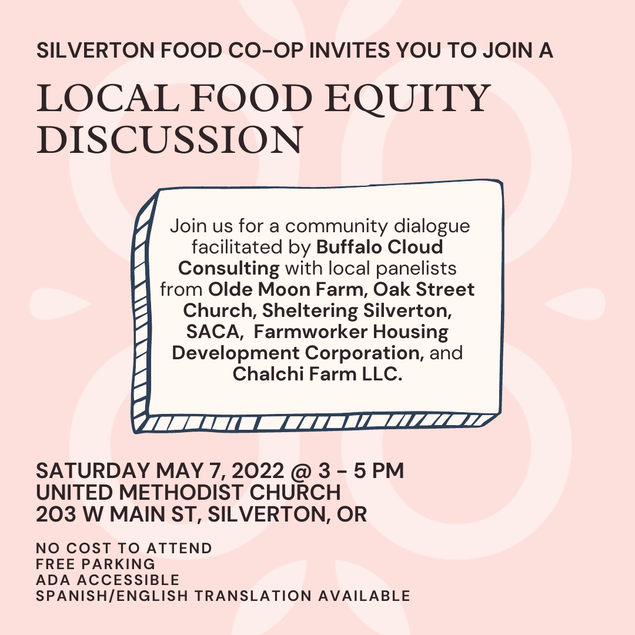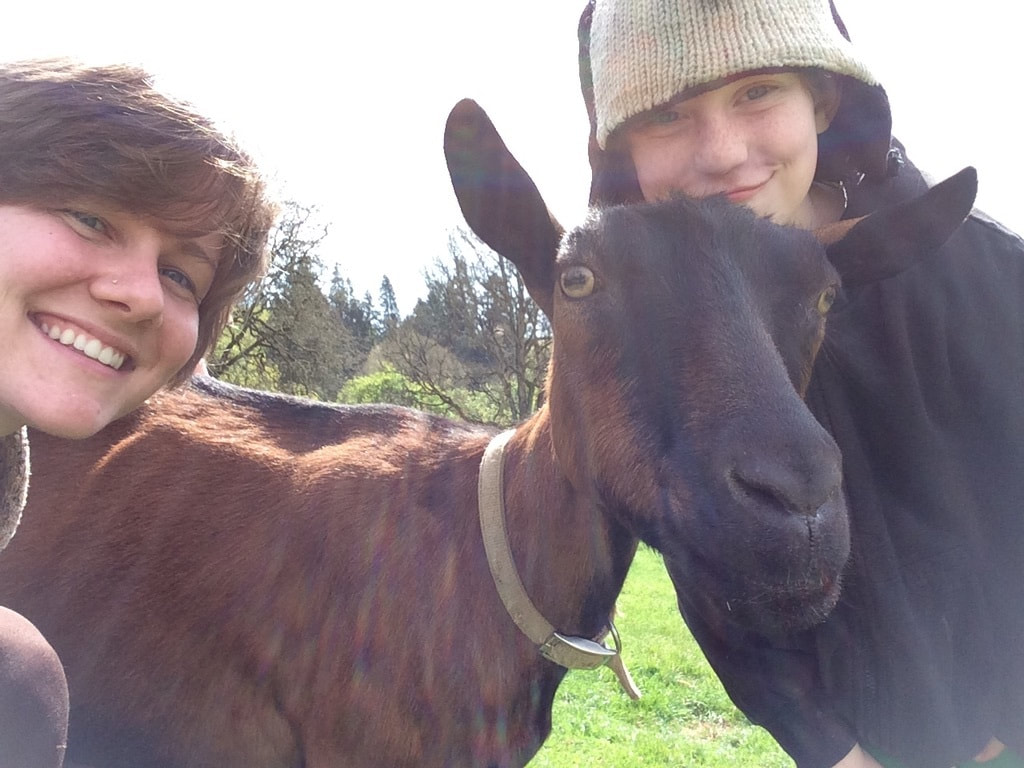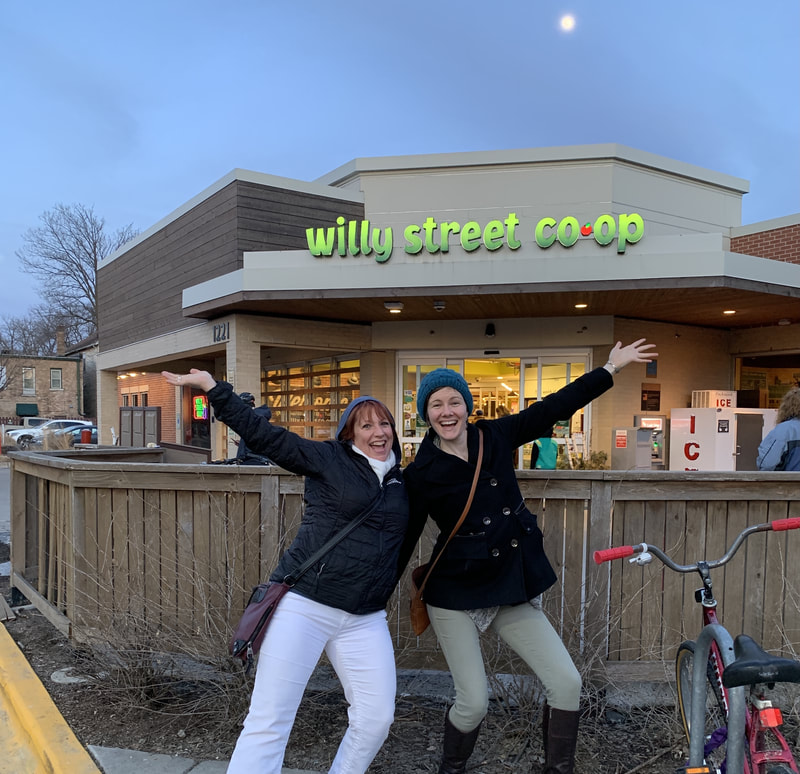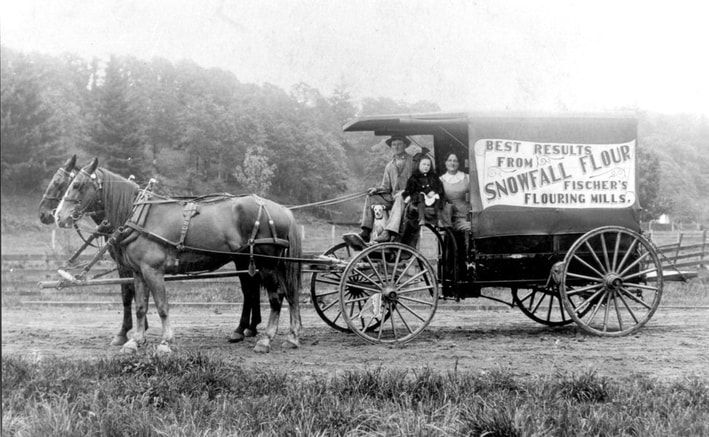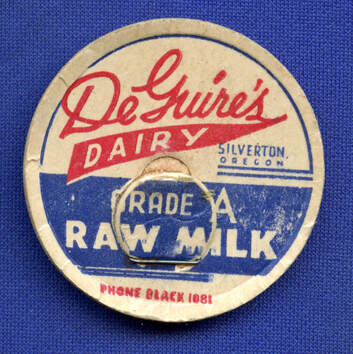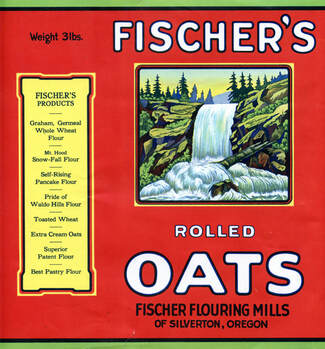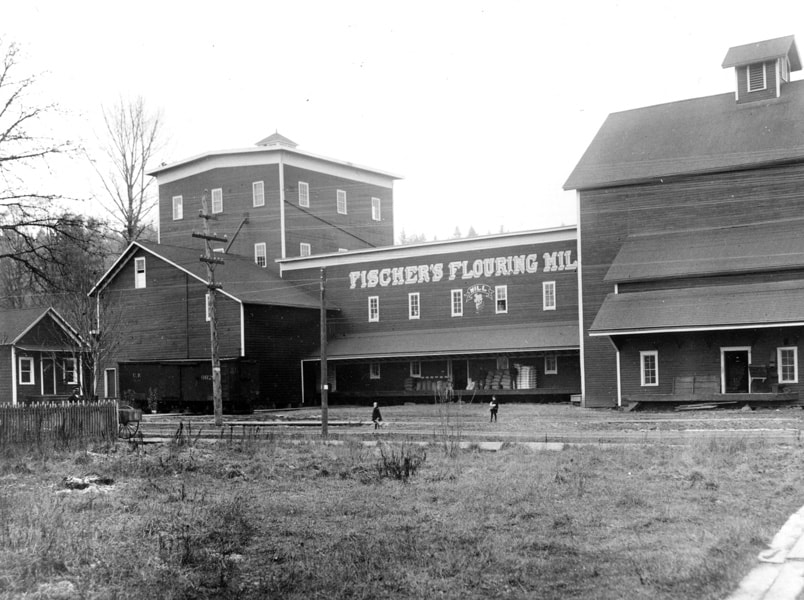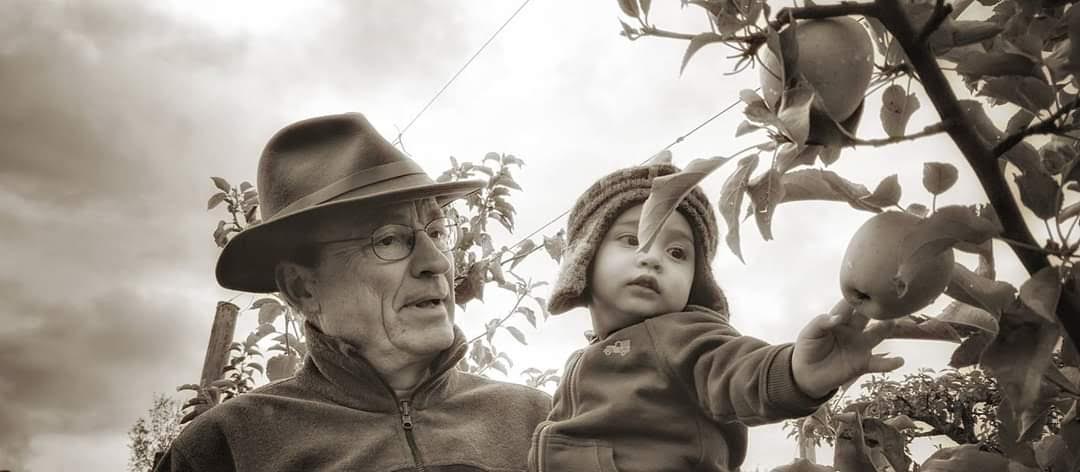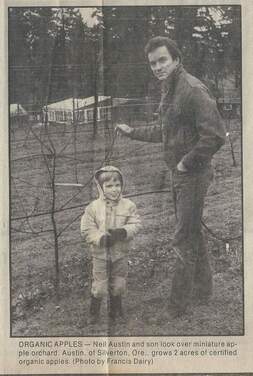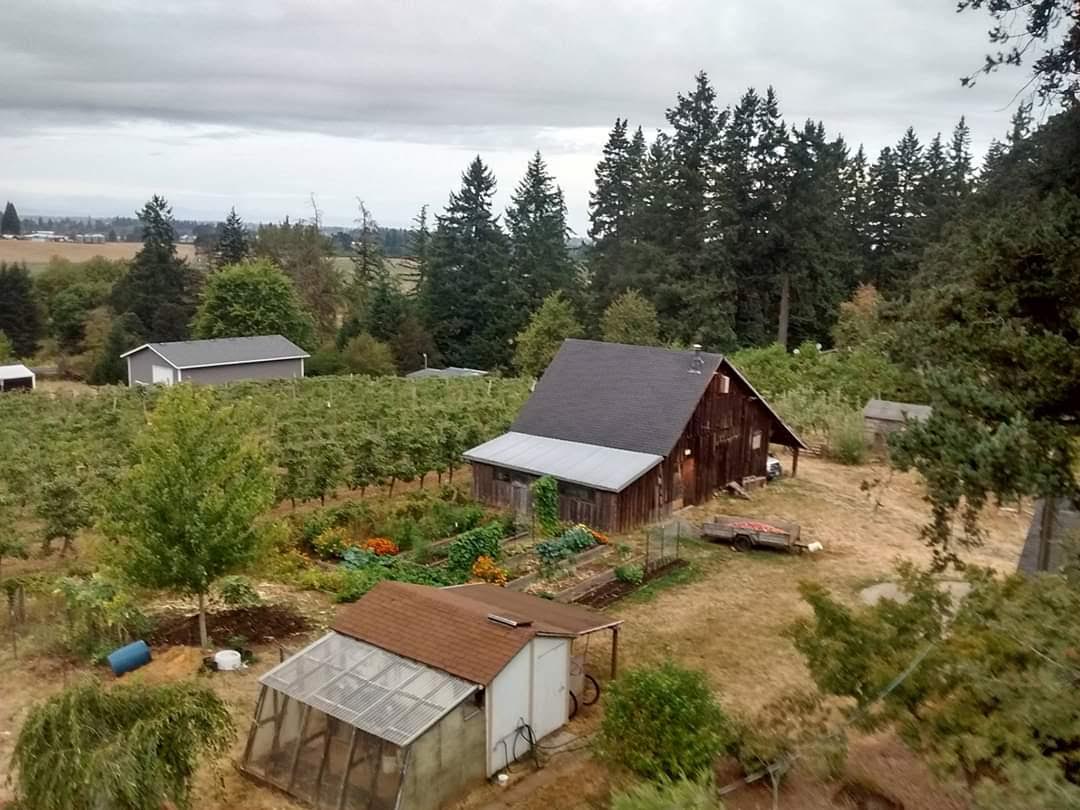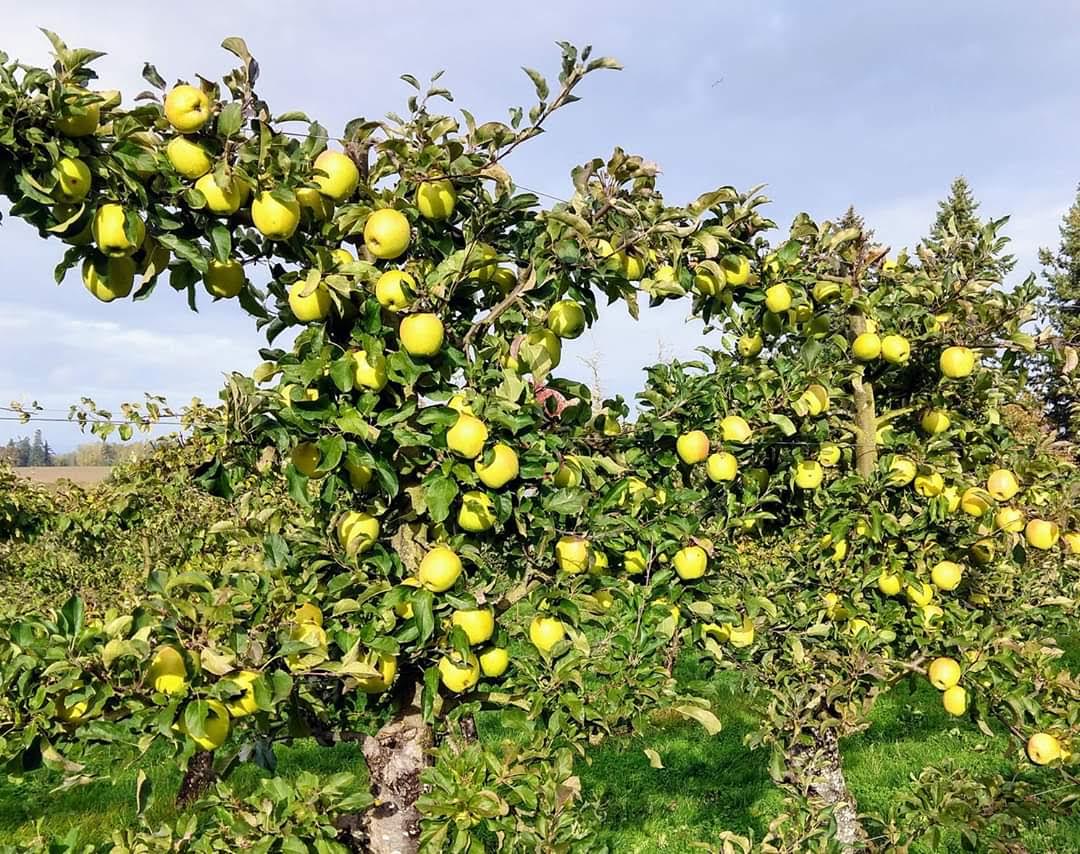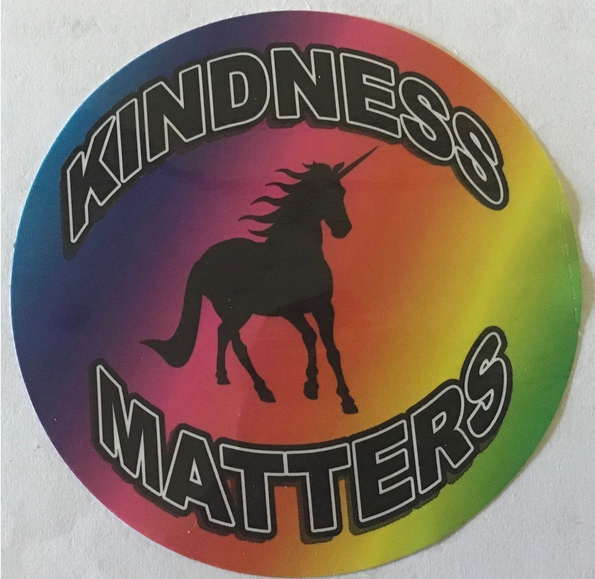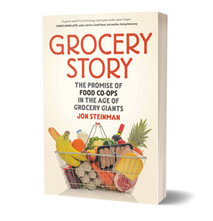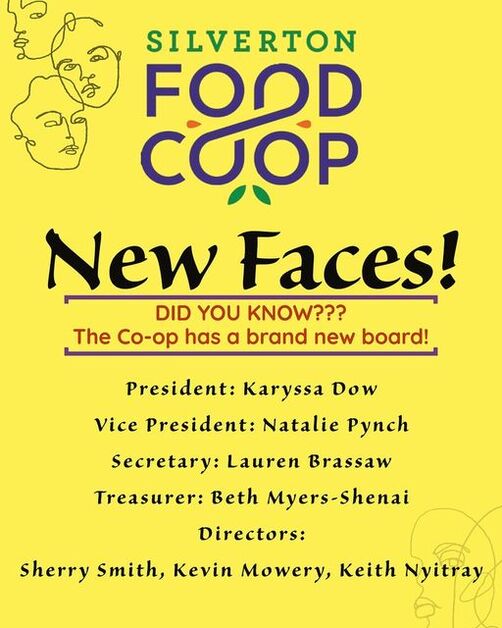 Did you know that the current Board is all new faces?! Including 2 directors (Sherry and Lauren) who bought ownerships just to be on the Board! We acknowledge the missteps and struggles of the past, and know there is hesitation among the community because of our history. We apologize for any frustrations and disillusionment this has caused. Your feelings of let down are valid. The current Board has so much excitement and energy for our future opportunities though! We are available for anyone who has questions (or grievances) about our new direction. There is no longer a focus on a large, flashy storefront. Our right now goal is to rebuild confidence in our ownership and show you what can be. In a time where inflation is hurting us all, we want to bring you affordable, healthy food options that are grown and processed as sustainably as possible. We haven’t disregarded the idea of a storefront, but it is something we want to grow into organically instead of starting from scratch with a magazine perfect grocery store. We are just a small group of humans that are passionate about access to nutritious food and bettering our community with a locally owned grocery option. The 7 of us (and our steadfast volunteers: Marc and Diana)are working countless hours behind-the-scenes to organize these Pop-Ups and they aren’t perfect, but we hope our ownership sees the value in what we are trying to start. Additionally, the model we are creating is not sustainable with the amount of people we have, so if you like this direction and want to see it succeed…WE NEED YOU! One exciting thing we are working on is accepting SNAP/EBT payments! We are hopeful to have this option at our April Pop-Up. If you made it to the end of this novel, we appreciate you. We appreciate your support and confidence in our ideas. We appreciate your orders and your smiling faces at our Pop-Ups. #silvertonfoodcoop #newdirections #newdirection #foodaccessforall #foodaccess #localfood #sustainablefoodsystems #sustainablefoodmovement #localfoodsystems #localfoodmovement #smalltowngrocer #smalltowngrocery #groceryhaul #grocery #grocerystore #foodcooperative #oregon #pnw
0 Comments
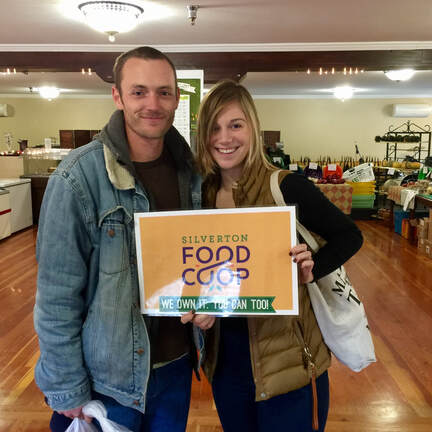 When I moved back to my hometown in 2017, I was pleasantly surprised to learn that a food cooperative was in the making and I eagerly became owner #205 of Silverton Food Co-op. I thought that by buying a share, I had done my part, and I could sit back and await our store’s grand opening. Not so fast. I periodically attended owner meetings here and there, asked questions about what the Board of Directors was working on, and kept wondering when our store would open. What was the hold-up? At one owner meeting, I heard myself asking “what are you guys doing about this?” and “have you thought about this?” Then I realized “you guys” were the small group of people that sat before me. Sure there were a handful of other volunteers, but there was no invisible army of organizers, no hired staff, no full-time community movers and shakers. And I finally really heard their plea: “we need help!” If you think back to previous meetings you’ve attended or look back through your inbox, I bet you’ll also recall this longstanding call to action. In January 2020, I joined the Board of Directors. I looked forward to bringing my enthusiasm for events and community engagement to the table, hoping to plan gatherings for our membership. Then the pandemic hit. Then the pandemic stayed. Then the capital campaign came and went. Our Board worked our tails off through it all to try and activate our membership, bring people together virtually, and raise funds to open our store. I felt exhausted, and to be honest, a little bit defeated after just my first year of holding a Director position. We had pretty much everything stacked against us (COVID, wildfires, ice storms, financial hardships, personal loss, and grief), but I couldn’t help but wonder if there was another force at play. Where were our owners? Why couldn’t we reach our people? I’ve realized in this reflection that there’s a big difference between increasing size vs. increasing capacity. We have a saying on our lawn signs that reads, “I own it, you can too!” But what does ownership in the Co-op mean? Yes, we each buy a share and get a vote. But ownership doesn’t stop there. Our Co-op gets bigger with each share purchased. Our Co-op grows with each owner we effectively and thoughtfully engage. 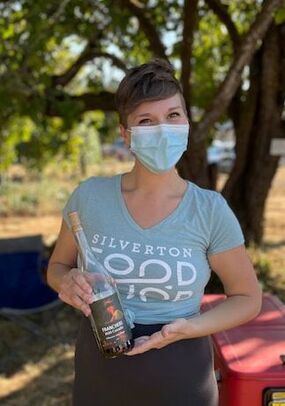 We’ve been on a path of increasing numbers and raising capital, but membership engagement, and growth for that matter, has stalled out in recent years. That’s something our Co-op’s leadership is looking to change, to ensure that we are really reaching and connecting with fellow owners. The Board is not our Co-op. We, all of us owners, are the Co-op! We also need to rethink our approach to volunteer and owner recruitment so that our leadership looks more like our ownership, and our ownership looks more like our greater community. It’s not about making space at the table, it’s about coming to the table of our community leaders - more of those movers and shakers I mentioned above - and passing decision-making power and vision over. How can we become a more equitable and justice-focused organization? How do we make way for new energy and leadership? We are the Co-op and each of us gets to decide what we do and how we do it. Tell us what you think, come to our upcoming Local Food Equity Discussion on May 7th, and, please, hear the call to action that took so long to reach my ears: we really do need your help! Becky Gilliam Board Secretary Owner #205 Outside of Scio, there is a group of community members boycotting a proposed large chicken farm in their community. I share their concerns for how it will affect them and that they were not informed of this development until it was late in the process. I understand the community’s desire to keep their air, water, and land serene and healthy. I also understand the chicken farm business seeing a consumer demand and trying to meet it. I see both sides and fighting back seems like the only option now, but I believe this difficult situation outside of Scio could have been prevented and that we can create a better path going forward.
Our food chain is an industry seeks profit over people and planet. Where do most people in the United States purchase eggs? At mega-chain grocery stores that make billions of dollars a year and purchase eggs from factory farms. We are keeping these factory farms and grocery stores in business and they grow to meet demand!! We, as consumers have the POWER to change our food system by CHOOSING to support locally-owned grocery stores, which supply locally made products. If we choose to buy our products from small farms and the locally owned cooperatives that stock their products, we get to slow the growth of big factory farming. This is why I want a community owned cooperative grocery store in the Mid-Willamette Valley region. I want to encourage more sustainable farming practices and create thriving wage jobs in our region and for developers and farmers to have an economically viable choice when considering a factory farm or a regenerative farm and I want to support the farmers who are already farming in this way. I want us to have a CHOICE when it comes to where we put our money, what we eat, and to help make the area more viable for sustainable farming. This method is circular, local, and resilient. We have the power to shift our food system through our voices and our choices. Let’s support cooperative movements that work for the people and honor the land. Links: The article about the mega chicken farm in Linn County can be found at the Statesman Journal FYI - In December 2021, Willamette Egg Farm has also been bought out by an Iowa and Ohio based company: Cayla Catino ere to edit. I never thought I would see the day that our Silverton based grocery store would no longer be locally owned and I wonder what Orville would have to say about it. I love Roth’s and I always will, but I am nervous for the changes to come. My heart has dropped knowing that the fourth richest person in Canada now owns it.
To me, living in a rural community is all about resilience. I want my community to meet my needs and I want to meet my community’s needs. We live in a place that is rich with assets. From business owners, farmers, to actively engaged citizens and people who understand the health and economic benefit of fresh local food. These are the people I want to grow my food, run my grocery store, and where I want to spend my money. Shopping at Roth’s made me feel more connected to the local community because the money I spent there stayed in the region. Now that the profits generated by Roth’s will be going outside of our state and country, I feel like I have lost some of that connection. I understand that no immediate staffing changes will happen and the Jim Pattison group values philanthropy, but knowing that my hard earned money is going to be leaving my neighbors to further increase the worth of the one percent makes me sad. Are we going to keep supporting a company that is owned by somebody with a networth of 10.4 billion dollars? I hope so, because our neighbors still work there! I want Roth’s to stay in business AND I want more options! Now, more than ever does our rural region need a cooperatively owned grocery store. A store that is owned by the community. A community that may not have billion dollars but that is rich in things that are priceless - people, social networks, neighbors and our hard working farmers who we know by name. These are the people I trust and these are the people I want to support when I shop for my food. Rural people are savvy, hard workers, and creative. We have the skills and desire to do what it takes to build a sustainable and resilient economy and food system. After all, we all need to eat. Why not eat in a way that supports community, resiliency, and local economics?! Our dinner can nourish more than our bodies and the family and friends we enjoy it with. It has the ability to nourish our whole community. -Cayla Catino Silverton Food Co-Op President and active community member. Cayla is a Program Manager at Rural Development initiatives which strengthens rural people, places, and economies in the Pacific Northwest. She has lived in rural communities her whole life and enjoys inspiring people to meet community needs together. Cayla has worked on an educational farm and is a homesteader at heart, always trying to make time to preserve the seasonal abundance by pickling, canning, and dehydrating and sharing ideas and recipes. "Re-Localization and Transition: What It Means" by Gus Frederick Silverton Food Co-op Owner #3572/6/2021 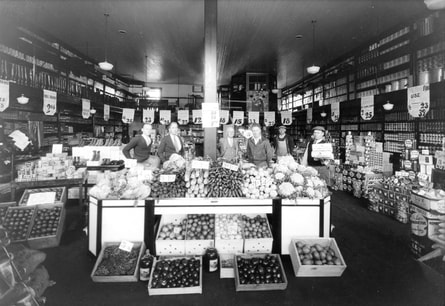 Julius Alm’s grocery story, North Water Street. Displaying a variety of local organically grown fruits and vegetables. Or as our grandparents referred to them, “fruits and vegetables.”(1915) Julius Alm’s grocery story, North Water Street. Displaying a variety of local organically grown fruits and vegetables. Or as our grandparents referred to them, “fruits and vegetables.”(1915) When the community of Silverton was founded in 1854, the location we know by that name today had been a site of human habitation for countless millennia. The state highway known as 213 like so many other thoroughfares, stared out as major trails and roads for the First Nations. The Euro-Americans for the most part simply widened these existing trails to accommodate horse-drawn wagons, and eventually automobiles. Over the course of fifty years, those original inhabitants succumbed to a variety of diseases that killed nine out of ten individuals. The survivors, whose traditional cultures had been shattered, were shuttled off to reservations along the coastal mountains west of their original homelands. Those first nations experienced a dramatic societal transition: A sudden and unexpected shift in reality. But their routes, trails, and roads remain. A silent testimony to ancient commerce. Ironically, the peoples who replaced them in this space were on the verge of their own societal transition. For thousands of years, the speed at which humans could travel great distances was determined by the speed of a horse on land, and the strength of the wind at sea. Then humans discovered steam power. More precisely, they discovered how to harness its power. This became possible through the advent of new materials and the processes used to create them. This transition took a bit over a century to become firmly implanted in society. But it soon was replaced with even faster and more efficient devices once liquid petroleum was found to be more efficient than solid chunks of coal. In 1854, Silverton officially became a community with a Post Office, but it was created according to the old, pre-steam paradigm. Travel was still pretty much limited to horsepower, although steam-powered riverboats provided transport of large, bulky, and over-sized loads. Communities sprang up along the Willamette River at locations suitable for riverboats to land. With horse-driven wagons completing the journey. Silverton was more than 15 miles from the river. By horse wagon, this meant at least a couple of hours or more, depending upon road conditions. When the steam-powered trains arrived in the 1870s, the transitional shift from horse to steam power was complete. Supply chains switched from wagons and riverboats to rail with centralized locational hubs. Horse-power was still used extensively at the local level to deliver the goods to the final destination like in the Riverboat days. Silverton was geographically fortunate to be located where it was, along the old Klamath Trail which hugged the foothills of the Cascade Mountains. Silverton’s “hay-day” as a market town was from the arrival of the narrow-gauge railway in the 1870s to the post-World War II era. During this period, goods and services were very much local. With several active lumber and flour mills, agricultural product canning, and the support services required to keep it all running. As a rail hub, the town acted as a conduit to the world. Raw goods shipped out, and processed commodities shipped in. And most of the day-to-day commodities such as food, were produced locally. Multiple small grocery stores in various neighborhoods provided fresh, locally grown organic fruits and vegetables. Several local dairies provided milk products, and multiple local butchers provided that service. The local support scene also included such obscure services as printing and graphic arts. Local artists created labels for locally produced products. Local engineers created and serviced machines required in the lumber mills and local farms. And as if like frosting on a cake, all this was documented by a robust local media community. Several newspapers, professional photographers, and artists helped record the story of our town’s history. 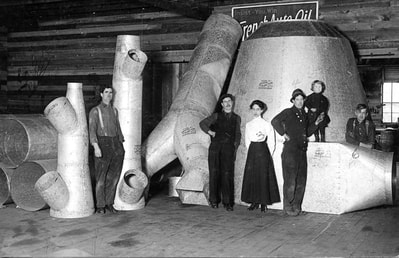 Silverton Blow-Pipe factory. They created all the ductwork and vents for the Silver Falls Timber Company. (1912) Silverton Blow-Pipe factory. They created all the ductwork and vents for the Silver Falls Timber Company. (1912) After World War II, another transitional period began. Horses were out of the picture except for recreational and aesthetic purposes. Rail use was greatly reduced, while petroleum-powered automotive “Internal Combustion Engines” (ICE) became ever more efficient. It soon became more “cost-effective” to ship goods by ICE-powered trucks instead of rail. With the expansion of the highway systems, it likewise became more “cost-effective” to centralize the goods and services that use to be provided at the local level. Telecommunications technology further accelerated our current bout of transition. This one, like the others, is defined by energy. But not a specific type of energy, but rather a source of energy that is renewable, sustainable as well as “clean.” Unlike fossil fuels that are noticeably warming the planet. With the ability that we have today, of networked computers that fit in our pockets, we can instantly communicate with any other person with a similar device anywhere in the world. Everyone it seems has a “phone.” A quaint hold-over term from the 19ths century, when being able to speak to someone miles away at the end of a wire seemed magical. Now we don’t have wires. Likewise, anyone can be a photographer, graphic artist, journalist, and filmmaker with the right app. It also means that those photographers, graphic artists, journalists, and filmmakers that made a living doing that, now compete with anyone with the right app. Newspapers are being replaced with digital feeds that attempt to simulate the old print, but just don’t quite make it. Texting and instant Messaging are replacing voice. And now with the new COVID-driven paradigm, these technologies are being pressed into service in many new ways. And then there’s the “Social Media…” These are all tools. And how one uses the tool is key. You can build a house with a hammer, or you can hit someone over the head with one. The key challenges we see in the coming years can be addressed in part by an increased emphasis on “re-localization.” Not just in food production, but in other services as well. This boils down to a single word: Community. We recognize that as tough as it will get, it will be much tougher without community. This process has been happening more and more as folks want to learn how to reconnect with their communities, neighbors, and food!  Promoting Positive Leadership and Integrity Terrence Shanigan is Alaska Native and his cultural roots descend from a small Aleut village along the Aleutian Chain. His mother and maternal grandparents instilled an appreciation for family and culture by teaching him the traditional way of life while encouraging a bridge to a more forward-looking life outside of the village. A United States Navy veteran, Terrence followed in his grandfather’s footsteps and strongly believes in service to others. He developed a persistent determination and strong self-discipline from his mother and grandfather who consistently modeled a good work ethic and a strong ability to problem-solve. Terrence is creative, an exceptional communicator, and possesses an effective ability to innovate and think outside of the box to solve challenging and complex problems. Terrence believes that the intrinsic pursuit of life-long learning is an essential component of his success. His appreciation for learning led Terrence to earn his Bachelor’s degree in Education in 1996, and in 2017, he retired early from a career in law enforcement to complete his MBA which he earned in from Louisiana State University in 2019. His spirit of exploration led Terrence on 1,000-mile humanitarian dog mushing expeditions in the Arctic, guiding Brown Bear safaris in Alaska, SCUBA photography in the Philippines, and travel to thirty countries. Terrence’s professional experience is broad and spans several entrepreneurial endeavors to more commonplace institutional positions. He is often sought out by Governors, U.S. Senators, State Legislators, and community leaders for policy expertise in public safety, organizational performance, education, and economic development. Terrence relies upon what he learned as a teacher, tribal council president, performance auditor, executive director, Alaska State Trooper, and legislative aide. His devotion to volunteering has led him to work with numerous charities over the past twenty years. “Operation PAWS” is one such humanitarian program he created as an Alaska state trooper where Terrence and his sled dogs mentored at-risk youth. The program eventually grew to homeless veterans, victims of sexual assault, and families impacted by suicide. Family, Aleut culture, faith, service to others, life-long-learning, and building strong personal relationships are the values Terrence believes will lead to continued success, opportunities, and a sense of fulfillment. Terrence is currently the Chief of Staff for State Senator Mike Shower of Alaska. Terrence is excited to be an owner within the Silverton Food Co-op (owner #752) and looks forward to meeting his neighbors in the Silverton and the surrounding areas as he works to help raise the capital resources needed to build a Silverton Food Co-op store in our community.
Neighbors Helping Neighbors - Blog Post by Stacy Canterbury, SFC Outreach Coordinator and Owner #7045/29/2020 Sticker given as a thank-you gift to one of our SFC volunteers at the Silverton Farmers Market My favorite co-op principle is #7: Concern for the Community. One of the best reasons to start a co-op is that it can become a business whose bottom line benefits everyone and where profitability isn’t exclusively defined by income. Silverton Food Co-op is already making this principle a reality. Our community has been hard hit by the twin crises of COVID-19 and business closures, so right from the start our SFC volunteers stepped up to help. Here are some recent highlights from this effort:
In March, our Outreach Coordinator began hearing about elders and immunocompromised folks who could no longer access groceries and household supplies safely. Along with other long-time volunteers, she started organizing free pickup and delivery services for this vulnerable group. Later that month, one of our newest members Vivienne Frankel, along with other community members began “Feeding Silverton’s Essential Workers”. The Silverton area donated over $7600 to buy food from local restaurants and businesses which helped keep them afloat during the shutdown. Then meals, snacks, vouchers, and donations were delivered by SFC members and other community volunteers to say “thank you” to those hardworking people who continue to make enormous efforts to keep us healthy, educated, and safe. Meals and snacks went to Silverton Hospital staff, first responders, school district employees, city staff, and others lifting everyone’s spirits. As a healthcare professional, Kalia Miller knew what a shortage of face masks could mean for Silverton and the surrounding area. And as an SFC Board Member, she embodies our community mindedness. So after long days at work, she began her second shift as a mask maker, giving her hand work away for the benefit of all. Other Silverton Food Co-op members donated fabric and elastic, making this a true community effort. When area grocery stores began experiencing supply disruptions, we started getting requests on social media for a list of area Farmers and Food Producers that sold directly to the public. Our Board President and Outreach Coordinator—along with our fabulous new Marketing Team—greatly expanded and edited our webpage directory, linking it to our public “storefront” and owner’s Facebook pages. The Marketing Team also began a new social media story series, called “Spotlights”. These are free ads showcasing local farmers and businesses, connecting our membership and the whole community with healthy, local foods. These are just a few of the ways that Silverton Food Co-op is supporting our communities through this moment. We want to continue our growth as a trusted community business. Do you know of other ways that SFC can help? Contact [email protected] with your suggestions! 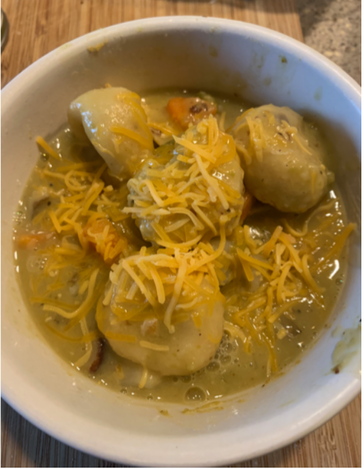 My three kids and I have been enjoying sharing some great food stories over the last few weeks via messaging and talking on the phone. I've had to cancel trips to visit all of them due to the pandemic, which means I am not traveling to all kinds of great food destinations, including Chesapeake Bay at Norfolk, VA, the San Francisco Bay area, and Boise, ID. So, no oysters and blue crab for me this spring! No chic New American cuisine in Palo Alto, and sadly, no down home Basque comfort food in Boise. But we have always been very connected through food, so for us, that discussion has just taken on a new form. A month ago, we started conspiring about how to get flour delivered so that our shared obsession for bread and cookie baking could go on. That evolved into talking about impacts to the food industry as both my daughter’s husbands manage restaurants and have been struggling in their careers for over a month. Here in Silverton, I think we are really lucky that our food system is still working pretty darn well. I compliment our store merchants whenever I get the chance and am delighted that I can still walk into one of our local food outlets and outdoor farmers market to get fresh produce, or have my whole grocery order packed up and delivered to the back seat of my truck! Several of our local restaurants have done an outstanding job converting to "carry out" business, which is remarkable and worthy of praise and patronage! What my kids and I have had the most fun with though, is sharing food and cooking stories from our homes. We do a pretty much daily check in on what's cooking for the day. I am a "waste not, want not" kind of guy. That means that I am always trying to devise some creative way to use that last scant half cup of corn meal I have stashed in the back of the cupboard, to add to a banana bread or meatloaf! Or maybe fabricate some dumplings out of a cup or so of masa for the split pea soup I made with everything that was left in the refrigerator. I am not joking about the dumplings I made out of the last bit of masa that I had in the back of the cupboard, and here's the photo to prove it! In Español these are called Chochoyotes. I recommend this recipe from Pati Jinich: https://patijinich.com/chochoyotes-corn-masa-dumplings/ I encourage you to share your food and your food stories with your family, your friends and your neighbors as a balm for your soul in these challenging times. Next to a big chunk of chocolate and planting a garden, it’s the best thing I’ve found to generate positive energy and stay connected with my loved ones both near and far!
I enjoyed reading this compact book about the history and current issues revolving around our food supply. Grocery Story is not a big book, but it is a pretty intense read, full of data and case histories, so I had to read it a couple chapters at a time and then set it down to digest and cogitate for a day or two. Steinman has “been there and done that” in the food world, and in many ways this book parallels my own lifelong interest in food. In the present format of retail food all over America, stores strive to wring as much marginal profit from their goods by working with the food giants to buy products that give them an economic edge. “Be Attentive” are the watch words for anyone entering a big box grocery store, is what my dad told me many years ago when he was still working for A&P, one of the grocery giants that Steinman writes about in his book, “Make a list. Be on guard, stay aware, and don’t give in to aimless wandering down the aisles unless you have to get something on your list. All of the fresh food is on the perimeter of the store and so long as you stay out there, you can do all right.” Things like shelf position, aisle location, product packaging, and forcing us to “hunt” for a product we want, are all ways we are manipulated once we walk into a store. When you add advertising and clever packaging, it is tough to feel like we have any discretion or connection to our food supply. The current COVID-19 pandemic highlights some important issues if the so-called supply chain is broken. Presently, due to reduced demand from the restaurant and institution food businesses, big industrial agri-businesses are dumping milk and plowing under crops that have no destination. Steinman gets down into the weeds on how this “system” operates and how it is dysfunctional and unsustainable. As I read this book, I could not help reflect on how the current pandemic has put a point on why massive industrial farms linked to a global transportation network based on fossil fuels is not a local consumer-centric enterprise. It too often does not serve the needs of the individual, their family or their community. I must tip my hat though to our local grocers, which have done a pretty darn good job of staying open, rationing scarce products, and providing a safe environment for shoppers, including online shopping. So, I’d like to give a shout out to them and their employees! The second half of Grocery Story focuses on the good news, which is that there is a long history of an alternative way to get food to our tables and it has been operating successfully for a very long time. Steinman writes elegantly and emphatically about the motivating factors for starting and sustaining a local food co-op, and he has really done his research on the subject. He uses several case studies to explain how a co-op works, the role it can play in community health and well-being, and also serve as an incubator of small business and truly sustainable local farming. Providing good jobs for our community is another really positive result of having a co-op. Steinman highlights how many of the endless opportunities to make community connections over food can be such a positive force locally. How the co-op engages in its community is only limited by the owners’ imagination. I highly recommend this book to all of our co-op members as an interesting read on grocery store and food supply history and evolution, and the options available to us regarding how it gets from the farm to our kitchen. Shopping at a co-op is really fun and can also anchor a community, generating positive energy that radiates throughout. The Silverton Food Co-op will be fine tuned in to what our community wants and needs. This book gives us a glimpse of how it will work and evolve over time once the “doors open” and we are up and running! Co-ops are like a big simmering soup pot of positive energy and as a result they foster and promote good eating and nutrition. This book gives readers a vision of what that is like. Believe me, I have lived in communities large and small with a food co-op for the past 51 years and it really does make life better! It will change our lives directly and at other times obtusely but in an up-beat way purely due to luck and serendipity. And best of all, WE OWN IT!! |
AddressPO Box 1742
Silverton, OR 97381 |
|
